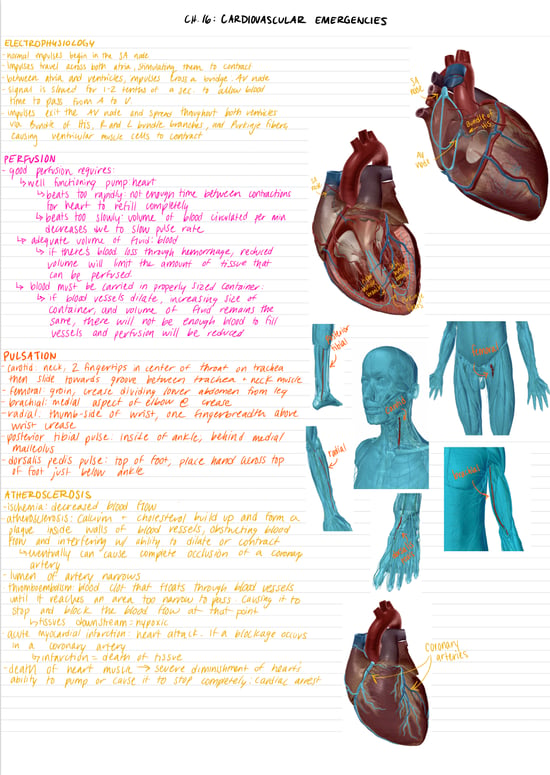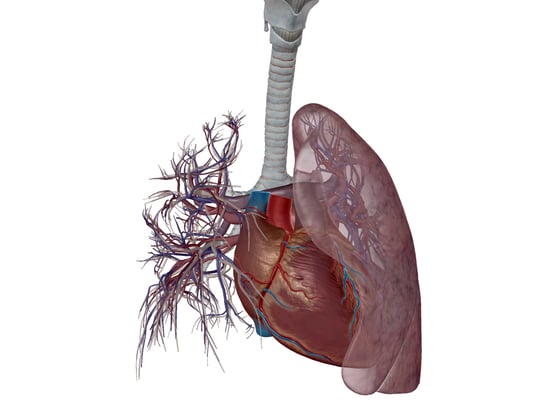Posted on 6/20/19 by Madison Oppenheim
Hey anatomy aficionados, you might remember me from my Surviving College as a Pre-Med blog post, but if you’re new here, I’m Madison, Visible Body’s Social Media Coordinator.
Next fall, I will be starting my sophomore year at Northeastern University. I'm studying Pharmaceutical Science and I'm on a pre-med track (hence the blog post). Currently, I’m knee-deep in the Emergency Medical Technician certification process. Similar to how celebrity children do "online school,” I’m taking my EMT class online. It’s a six-week program with the final five days in person, in order to learn and test practical skills. I’m currently in the fourth week and learning a TON.
In this post I'm going to share how I’m incorporating Human Anatomy Atlas into my note-taking and subsequent final exam studying. In my previous blog post, I mentioned that I take notes for my classes using GoodNotes with my iPad Pro and Apple Pencil. Nothing has changed; I still standby that program wholeheartedly!
My EMT course is formatted in a weekly manner. Every Monday at midnight we have a certain number of assignments due on the previous 8-ish chapters. These assignments range from interactive lectures to eBook quizzes, simulations, case studies, post-tests, and a weekly section exam. Technically we’re supposed to read the eBook and the lectures, but I’m going to be honest with you: it’s redundant. And frankly:

To be efficient, I take diligent notes on the lectures and just skim the eBook. Once I finish up a chapter’s lecture, I’ll pop on over to Human Anatomy Atlas and grab some corresponding screenshots to import into my notes. I’ve taken Anatomy and Physiology basically three times*** in my educational career so by now I know most of my stuff, but a refresher never hurts, especially since those are the fundamentals of being an EMT.
The majority of emergencies EMTs are trained to treat deal with are crises involving a patient’s ABCs: airway, breathing, and circulation. So the main focus of my studies is on respiratory and cardiovascular conditions. It’s essential to have a firm understanding of normal anatomy and physiology in order to diagnose and treat critical conditions. Having Human Anatomy Atlas as a supplement to my learning has been such a helpful tool.

Here's a screenshot from my first page of notes from Chapter 16: Cardiovascular Emergencies.
The ability to physically interact with the hundreds of 3D models in Atlas has been instrumental in my studying. The section exams at the end of each week are pretty hefty (anywhere from 100-140 questions) so a refresher on that week's chapters is a must. In addition to electronically thumbing through my notes, I love being able to "play" with the anatomical structures. It makes studying less mundane note-rereading and more exploratory interaction. This helps me both remember the topics better, but also visualize connections between the anatomy, physiology, and pathology.
One of my favorite models that I constantly return to is Respiratory System View 12: Pulmonary Circulation. Since the ABCs are the EMTs primary focus, having just the main cardiovascular and respiratory organs pop up with one click is awesome! It's so easily accessible and perfect for when I need a quick refresher or want a corresponding visual.
 Respiratory System View 12: Pulmonary Circulation from Human Anatomy Atlas.
Respiratory System View 12: Pulmonary Circulation from Human Anatomy Atlas.
The summer is flying by; this course is almost over, and soon I'll be taking both my practical and written exam. I'm trying to not think about all the cramming studying I'll need to do to prepare, but at least I'll have all my notes and visuals in one place.
I’m very excited to start this next chapter of my life and be one step closer to #PhysicianStatus.
*** Not because I failed twice, but because the classes were all slightly different (but essentially covered the same material).
When you select "Subscribe" you will start receiving our email newsletter. Use the links at the bottom of any email to manage the type of emails you receive or to unsubscribe. See our privacy policy for additional details.
©2025 Visible Body. All Rights Reserved.